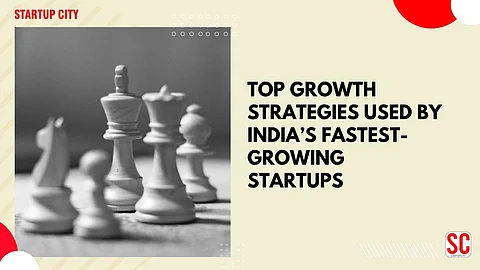

In my journey of speaking with hundreds of ambitious founders, there’s one question I hear time and again: “What are India’s fastest-growing startups doing differently?”
It’s a fair question. When we see startups like Zepto, CRED, Dunzo, and boAt scaling rapidly, attracting investors, and dominating headlines, we’re naturally curious: What’s their secret sauce?
Well, after analyzing trends, digging into startup case studies, and interacting with successful founders, I’ve identified some recurring growth strategies that consistently deliver results—and in this article, I’m going to walk you through them.
Whether you’re an early-stage founder or a seasoned entrepreneur looking to pivot and scale, this guide is your roadmap to high-velocity growth.
Before we dive into the strategies, let me ask you this:
Are you building for users, or are you just building?
Growth in today’s hyper-competitive Indian startup ecosystem isn’t just about marketing budgets or product launches. It’s about creating momentum, trust, and stickiness—fast.
According to Bain & Co., over 90% of Indian unicorns that achieved rapid growth between 2020 and 2023 prioritized product-market fit and scalable GTM strategies from Day 1.
Let me show you how you can do the same.
I can’t stress this enough: Without product-market fit (PMF), growth is just noise.
It’s not just customer acquisition. It’s when:
Your product solves a deep, recurring problem.
Customers are coming back organically.
You feel demand pulling your product forward.
Think of Zerodha. The founders spent years fine-tuning their discount brokerage model. Once they found PMF, they scaled without spending a single rupee on ads in the early years.
Run surveys. Conduct user interviews. Use tools like Typeform or Hotjar. Your goal? Obsessively understand your user.
Branding is your moat in 2025.
In an age of algorithm-driven sameness, a magnetic brand is what gets remembered.
boAt: Mixed pop culture with audio tech. Built an identity, not just products.
Mamaearth: Human-first messaging, influencer collaborations, and strong emotional connect.
Define your brand tone early.
Tell your story. Not just your product.
Use content to emotionally connect with your audience.
“People don’t buy what you do; they buy why you do it.” — Simon Sinek
If you’re not tracking data, you’re guessing. And guesswork is expensive.
Use cohort analysis to understand user behavior.
A/B test relentlessly.
Track LTV (Lifetime Value) vs CAC (Customer Acquisition Cost).
Google Analytics + Mixpanel
Notion + Retool for internal dashboards
Segment + Looker for insights
“Do I know exactly which channel brings me my highest value customers?”
If not, it’s time to fix that.
Gone are the days when TV and newspaper ads were king. Today, digital-first and viral-first strategies dominate.
Instagram Reels & LinkedIn thought leadership
Influencer marketing (nano & micro)
WhatsApp marketing & referral loops
Zepto’s launch campaigns used catchy Instagram content, college ambassadors, and hyperlocal influencer shoutouts. Result? 10x growth in Tier-1 cities in under a year.
Imagine this: Instead of spending on ads, you co-launch a product with a complementary brand and share audiences.
That’s smart growth.
Dunzo partnered with local stores, not big retail.
CRED teamed up with premium brands to offer exclusive rewards.
Partner with SaaS tools, influencers, or community pages.
Start your own branded community on Telegram or Discord.
Speed is a competitive advantage.
The smartest founders don’t do everything themselves—they build systems.
Zapier or Make for automation
Canva + ChatGPT for content creation
HubSpot + Mailchimp for CRM and email
Ask yourself:
“Is this repeatable? If yes, can it be automated?”
Let your team focus on strategy—not spreadsheets.
Growth isn’t just about acquisition—it’s about retention.
Offer personalization and value
Build email/SMS drip campaigns
Collect regular feedback and iterate
Fun fact: Increasing customer retention by 5% can increase profits by 25%–95% — Bain & Co.
This one’s personal.
In my experience, startups that grow the fastest have one thing in common:
A culture of ownership, experimentation, and learning.
Every team member feels like a stakeholder.
Failure is treated as data, not drama.
Feedback is real-time, not annual.
“Culture eats strategy for breakfast.” — Peter Drucker
If you’ve read this far, let me tell you: You’re already ahead of most.
Growth isn’t a checklist. It’s a mindset.
The best startups don’t just follow trends—they test, fail fast, learn faster, and iterate faster than the rest.
Your next stage of growth doesn’t need a million-dollar budget. It needs clarity, courage, and consistency.
So here’s your next step:
Pick one strategy from this list.
Execute it for 30 days.
Measure. Learn. Repeat.
And if you ever feel stuck, remember—you’re not alone. Every great founder once stood where you are now.
Let’s build the next great startup story, together.